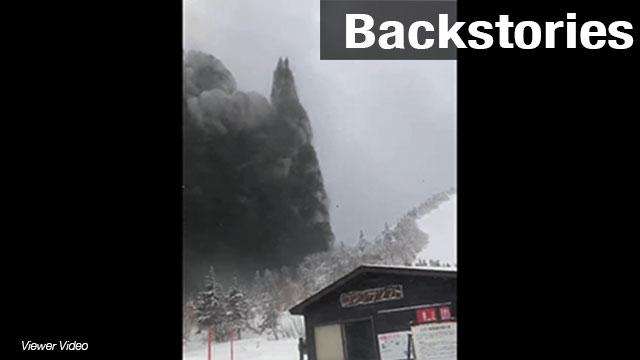Since then, Japan's Meteorological Agency has resumed its analysis of the country's major volcanoes. It recently announced the results of its survey. "At least 21 volcanoes in Japan are at risk of erupting at craters other than those that are being closely monitored."
The announcement has left the country scrambling to step up volcanic disaster prevention measures.
The unexpected eruption
"The scene was so surreal," a witness to the Mount Kusatsu-Shirane eruption told NHK. "It was as if I was watching a movie." With the crater just 100 meters from a ski lift, the situation was very dangerous. Smoke and volcanic rock hindered transportation.
The volcano has long been monitored for activity. One of its peaks, Shirane, has been under constant surveillance. But last year's eruption took place at Moto-Shirane, a peak about two kilometers to the south. The possibility of something happening there had not been on anyone's radar. There were no security cameras, no emergency plans. The eruption prompted the Meteorological Agency to reexamine its protocol and look for any other unwatched craters.
Mount Fuji among unmarked craters
The Agency monitors 50 volcanoes around-the-clock. But since the Mount Kusatsu-Shirane eruption, it has been searching for unmonitored craters with eruption risks. Their latest research uncovered every crater in Japan that has erupted in the past 10,000 years. They identified unmarked craters with eruption risks in at least 21 volcanoes.
"All craters have risks," says Professor Mitsuhiro Nakagawa of Hokkaido University. "The eruption last January underlined the need to further examine where exactly such craters are located."
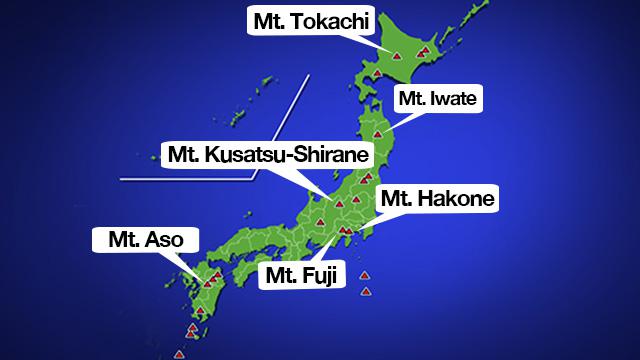
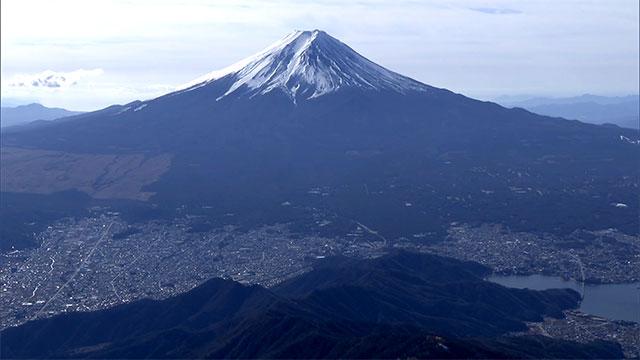
One of the 21 volcanoes flagged by the Agency's research is Japan's tallest and most famous peak, Mount Fuji. The survey located an unwatched crater near a Ground Self-Defense Force training area at the foot of the mountain.
Mitsuhiro Yoshimoto at the Mount Fuji Research Institute has conducted a detailed geographical survey of the area. He discovered a 500-meter long crater which had erupted about 1,500 years ago.
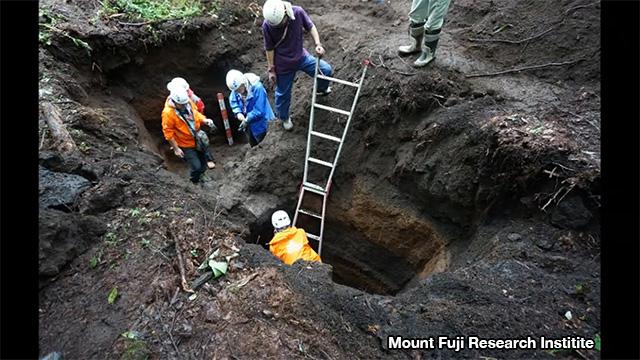
Experts believe lava reached a nearby settlement, only 1.5 kilometers away. Yoshimoto warns that people should be prepared and evacuation measures should be in place.
"The presence of a crater means there was an eruption in the past," he says. "Particular caution needs to be taken in places where craters are found. Residents and municipalities should be fully aware of the risks."
Preparing for risks
The Mount Kusatsu-Shirane eruption prompted a town in the northern prefecture of Hokkaido to start taking precautions.
Kamifurano lies at the foot of Mount Tokachi. Town officials have been on alert for a possible eruption from what's known as the "62-2 crater." But new Agency research has identified an eruption risk at another crater, called "Nukkakushi."
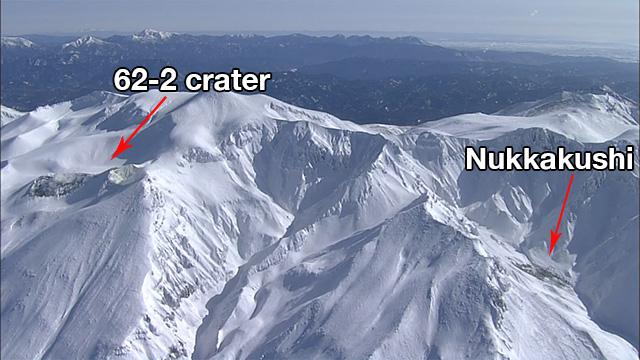
An eruption warning has been posted at the entrance of an inn just 1.6 kilometers away. Similar signs can be found at the registration area where climbers sign up for treks up Mount Tokachi.
Before the discovery of the risk posed by the "Nukkakushi" crater, the inn had plans to evacuate visitors to its cafeteria in the event of an eruption. But the measure was adjusted because the cafeteria windows face the crater.
Instead, the inn will evacuate visitors to a basement level.
"It would fit about 100 people," a worker at the inn said. "We need to ensure the safety of our guests, so we need to be better prepared."
"We shouldn't worry about whether pointing to disaster risks will keep tourists away," a Kamifurano official said. "Rather, we should emphasize the fact that our town coexists with a volcano. What's important is to fully grasp the risks."
Agency steps up security at the craters
The Meteorological Agency says it will increase its monitoring of the craters at the 21 volcanoes. It plans to set up new security cameras around unmonitored craters at seven of the volcanoes, including Mount Hakone near Tokyo. It will also use webcams already put in place by municipalities and other groups.
Officials say the craters that had already been under watch are the likeliest to erupt. But what happened at Mount Kusatsu-Shirane last January has shown that caution must be exercised even at craters that are believed to be low risk.
The Agency is required to share information with local municipalities and make sure residents and tourists are adequately warned of the risks.
